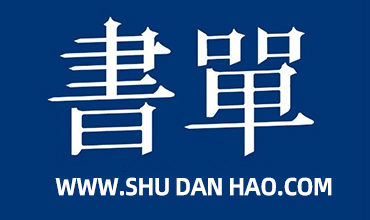![[美] 科特勒《营销管理分析、计划、执行与控制(第九版)》](http://oss.shudanhao.com/caiji/chazidian/2023/8248.jpg)
[美] 科特勒《营销管理分析、计划、执行与控制(第九版)》
书刊介绍
内容简介
内容提要
本书作者是美国营销学界权威人士之一,这本《营销管理-分析、
计划、执行与控制》已取得营销学界的普遍认可,并广泛地应用于教
学和实践。第九版由介绍营销管理的原理概念、分析营销机会、制定
营销战略、营销计划和组织执行市场营销等五个部分组成,继续保持
了以往各版的一些基本出发点和特征,包括:
1.面向管理者,重点在于决策协调;
2提供分析营销管理中常见问题的一个框架,以真实的案例说明原理;
3.引用许多经济学、行为科学和数学方面的基本原理;
4.把营销思想应用于市场的各个方面、而不只是指产品和服务;
5.覆盖面广而内容安排均衡,包括了一个营销管理人员需要知道的
所有课题。
作者看到了营销中非常重要的一些趋势,如全球营销观点的进一
步兴起、电子网上销售、高技术产业营销地位的加强、公众及企业对
市场及营销行为道德的呼吁等等,并如多年前提出著名的营销组合概
念一样,又提出了许多新的营销观点和概念。可以说,作者捕捉新信
息的能力是非凡的。这本书堪称营销方面的最新著作,对将来或许产
生深远的影响。
本书可以作为大学商学院本科生和研究生教学的优秀教科书,也
可用作研究和实际工作的参考。
作品目录
BRIEF CONTENTS
UNDERSTANDING MARKETING MANAGEMENT
1 Assessing Marketing's Critical Role in Organizational Performance
2 Building Customer Satisfaction Through Quality, Service, and Value
3 Winning Markets Through Market-Oriented Strategic Planning
ANALYZING MARKETING OPPORTUNITIES
4 Managing Marketing Information and Measuring Market Demand
5 Scanning the Marketing Environment
6 Analyzing Consumer Markets and Buying Behavior
7 Analyzing Business Markets and Business Buying Behavior
8 Analyzing Industries and Competitors
9 Identifying Market Segments and Selecting Target Markets
DEVELOPING MARKETING STRATEGIES
10 Differentiating and Positioning the Market Offering
11 Developing New Products
12 Managing Life-Cycle Strategies
13 Designing Marketing Strategies for Market Leaders, Challengers,Followers, and Nichers
14 Designing and Managing Global Marketing Strategies
PLANNING MARKETING PROGRAMS
15 Managing Product Lines, Brands, and Packaging
16 Managing Service Businesses and Product Support Services
17 Designing Pricing Strategies and Programs
18 Selecting and Managing Marketing Channels
19 Managing Retailing, Wholesaling, and Market Logistics
20 Designing and Managing Integrated Marketing Communications
21 Managing Advertising, Sales Promotion, and Public Relations
22 Managing the Sales Force
23 Managing Direct and Online Marketing
MANAGING THE MARKETING EFFORT
Organizing, Implementing, Evaluating, and Controlling Marketing
Activities
TECHNICAL APPENDIXES
Appendix 1. The Theory of Effective Marketing-Resource Allocation
Appendix 2. Statistical Methods for Future Demand Projection
AUTHOR INDEX
COMPANY/BRAND INDEX
SUBJECT INDEX
Preface
Part l
UNDERSTANDING MARKETING
MANAGEMENT
CHAPTER 1 Assessing Marketing's Critical Role in Organizational
Performance
DOING BUSINESS IN THE GLOBAL ECONOMY
The Global Economy ?The Income Gap ?The
Environmental Imperative and Other Business Trends ? Technological Advances ?Focus on the Customer ? Other Issues
WHAT IS MARKETING? THE CORE CONCEPTS
Needs, Wants, and Demands ?Products (Goods, Services,
and Ideas) ?Value, Cost, and Satisfaction ?Exchange
and Transactions ?Relationships and Networks ? Markets ?Marketers and Prospects
MARKETING MANAGEMENT
COMPANY ORIENTATIONS TOWARD THE
MARKETPLACE
The Production Concept ?The Product Concept ? The Selling Concept/Sales Concept ?The Marketing
Concept ?The Societal Marketing Concept
THE RAPID.ADOPTION OF MARKETING
MANAGEMENT
In the Business Sector ?In the Nonprofit Sector ?In;
the Global Sector
SUMMARY
CONCEPT APPLICATIONS
NOTES
CHAPTER 2 Building Customer Satisfaction Through Qualtty,
Service, and Value
DEFINING CUSTOMER VALUE AND SATISPACTION
Customer Value ?Customer Satisfaction
DELIVERING CUSTOMER VALUE AND
SATISFACTION
Value Chain ?Value-Delivery Network
ATTRACTING AND RBTAINING CUSTOMERS
Computihg the Cost ofLostCustomers ?TheNeedfor
Customer Retention ?Relationship Marketing:
The Key
CUSTOMER PROFITABILITY: THE ULTIMATE TEST
IMPLEMENTING TOTAL QUALITY MARKETING
SUMMARY
CONCEPT APPUCATIONS
NOTES
CHAPTBR 3 Winning Markets Through Market-Oriented Strategic
Planning
THE NATURE OF HlGH-PERFORMANCE BUSINESSES
Stakeholders ?Processes ?Resources ? Organization and Organizational Culture
CORPORATE AND DlVISION STR ATEGIC PLANNING
Defining the Corporate Mission ?Establishing Strategic
Business Units ?Assigning Resources to Each SBU ? Planning New Businesses ?Downsizing Older
Businesses
BUSINESS STRATEGIC PLANNING
Business Mission 80 ?External Environment Analysis
(Opportunity and Threat Analysis) ?Internal Environment
Analysis (Strengths/Weaknesses Analysis) ?Goal
Formulation ?Strategy Pormulation ?Program
Formulation ?Implementation ?Peedback and
Control
THE MARKETING PROCESS
Analyzing Marketing Opportunities ?Developirig
Marketing Strategies ?Planning Marketing Programs
?Managing the Marketing Effort
PRODUCT PLANNING: THE NATURE AND CONTENTS OF A
MARKETING PLAN
Executive Summary and Table of Contents ?Current
Marketing Situation ?Opportunity and Issue Analysis
?Objectives ?Marketing Strategy ?Action
Programs ?Projected Profit-and-Loss Statement ? Controls
THE SHAPE OF MARKETING PLANNING IN THE
1990s
SUMMARY
CONCEPT APPLICATIONS
NOTES
Part 11
ANALYZING MARKETING
OPPORTUNITIES
CHAPTER 4 Managing Marketing Information and Measuring
Market Demand
WHAT IS A MARKETING INFORMATION SYSTEM?
INTERNAL RECORDS SYSTEM
The Order-to-Payment Cycle ?Sales Reporting
Systems
MARKETING INTELLIGENCE SYSTEM
MARKETING RESEARCH SYSTEM
Suppliers ofMarketing Research ?The Marketing Research
Process ?The Characteristics ofGoodMarketing Research
?Overcoming Barriers to the Use ofMarketing Research
MARKETING DECISION SUPPORT SYSTEM
AN OVERVIEW OF FORECASTING AND DEMAND
MEASUREMENT
Measures of Market Demand ?Which Market to
Measure? ?A Vocabulary for Demand Measurement
?Estimating Current Demand ?Estimating Future
Demand
SUMMARY
CONCEPT APPLICATIONS
NOTES
CHAPTER 5 Scanning the Marketing Environment
ANALYZING NEEDS AND TRENDS IN THE
MACROENVIRONMENT
IDENTIFYING AND RESPONDING TO THE MAJOR
MACROENVIRONMENT FORCES
Demographic Environment ?Economic Environment
?Natural Environment
?Political/Legal Environment
Environment
SUMMARY
CONCEPT APPLICATIONS
NOTES
CHAPTER 6 Analyzing Consumer Markets and Buying
Behavior
A MODEL OF CONSUMER BEHAVIOR
MAJOR FACTORS INFLUENCING BUYING
BEHAVIOR
Cultural Factors ?Social Factors ?Personal
Factors ?Psychological Factors
?Technological Environment
?Social/Cultural
THE BUYING PROCESS
Buying Roles ?Buying Behavior
the Buying Decision Process
SUMMARY
CONCEPT APPLICATIONS
NOTES
?The Stages of
CHAPTER 7 Analyzing Business Markets and Business Buying
Behavior
WHAT IS ORGANIZATIONAL BUYING?
The Business Market versus the Consumer Market ? Buying Situations ?Participants in the Business Buying
Process ?Major Influences on Business Buyers ? The Purchasing/Procurement Process
INSTITUTIONAL AND GOVERNMENT MARKETS
SUMMARY
CONCEPT APPLICATIONS
NOTES
CHAPTER 8 Analyzing Industries and Competitors
IDENTIFYING COMPETITORS
Industry Concept of Competition ?Market Concept of
Competition
IDENTIFYING COMPETITORS' STRATEGIES
DETERMINING COMPETITORS' OBJECTIVES
ASSESSING COMPETITORS' STRENGTHS AND
WEAKNESSES
ESTIMATING COMPETITORS' REACTION PATTERNS
DESIGNING THE COMPETITIVE INTELLIGENCE
SYSTEM
SELECTING COMPETITORS TO ATTACK AND AVOID
BALANCING CUSTOMER AND COMPETITOR
ORIENTATIONS
SUMMARY
CONCEPT APPLICATIONS
NOTES
CHAPTER 9 Identifying Market Segments and Selecting Market
Targets
MARKET SEGMENTATION
Levels of Market Segmentation ?Patterns of Market
Segmentation ?Market-Segmentation Procedure ? Bases for Segmenting Consumer Markets ?Bases for
Segmenting Business Markets ?Requirements for Effective
Segmentation
MARKET TARGETING
Evaluating the Market Segments ?Selecting the Market
Segments ?Additional Considerations in Evaluating and
Selecting Segments
SUMMARY
CONCEPT APPLICATIONS
NOTES
Part lll
DEVELOPING MARKETING STRATEGIES
CHAPTER 10 Differentiating and Positioning the Market
Offering
TOOLS FOR COMPETITIVE DlFFERENTIATION
Product Differentiation ?Services Differentiation
Personnel Differentiation ?Channel Differentiation
?Image Differentiation
DEVELOPING A POSITIONING STRATEGY
How Many Differences to Promote? ?Which Differences
to Promote?
COMMUNICATING THE COMPANY'S POSITIONING
SUMMARY
CONCEPT APPLICATIONS
NOTES
CHAPTER 11 Developing New Products
CHALLENGES IN NEW-PRODUCT DEVELOPMENT
EFFECTIVE ORGANIZATIONAL ARRANGEMENTS
MANAGING THE NEW-PRODUCT DEVELOPMENT
PROCESS
Idea Generation ?Idea Screening ?Concept
Development and Tescing ?Marketing Strategy
Development ?Business Analysis ? Product Development ?Market Testing ? Commetcialization
?THE CONSUMER-ADOPTION PROCESS
Stages in the Adoption Process ?Factors Influencing rhe
Adoprion Process
SUMMARY
CONCEPT APPLICATIONS
NOTES
CHAPTER 12 Managing Life-Cycle Strategies
THE PRODUCT LlFE CYCLE
Demand/Technology Life Cycle ?Stages in the Product
Life Cycle ?Product-Category, Product-Form, Product,
and Brand Life Cycles ?Other Shapes of the Product Life
Cycle The International Product Life Cycle
MARKETING STRATEGIES THROUGHOUT THE PLC
Introduction Stage ?Growth Stage ?Maturity
Stage ?Decline Stage
the Product Life-Cycle Concept
MARKET EVOLUTION
Stages in Market Evolution
Competition
SUMMARY
CONCEPT APPLICATIONS
NOTES
?Summary and Cntique of
?Dynamics of Attribute
CHAPTER 13 Designing Marketing Strategies for Market Leaders,
Challengers, Followers, and Nichers
MARKET-LEADER STRATEGIES
Expanding the Total Market ?Defending Market Share
?Expanding Market Share ?Two Case Scudies:
Procter & Gamble and Caterpillar
MARKET-CHALLENGER STRATEGIES
Defining the Strategic Objective and Opponent(s) ? Choosing a General Attack Stracegy ?Choosing a Specific
Attack Strategy
MARKET-FOLLOWER STRATEGIES
MARKET-NlCHER STRATEGIES
Niche Specialization
SUMMARY
CONCEPT APPLICATIONS
NOTES
CHAPTER 14 Designing and Managing Global Marketing
Strategies
DECIDING WHETHER TO GO ABROAD
DECIDING WHICH MARKETS TO ENTER
DECIDING HOW TO ENTER THE MARKET
Indlrect Export ?Direct Export ?Licensing
?Joint Venrures ?Direct Investment ?The
Internationalization Process
DECIDING ON THE MARKETING PROGRAM
Product ?Promotion ?Price ?Place
(Distribution Channels)
DECIDING ON THE MARKETING ORGANIZATION
Export Deparrment ?International Division ? Global Organization
SUMMARY
CONCEPT APPLICATIONS
NOTES
Part IV
PLANNING MARKETING PROGRAMS
CHAPTER 15 Managing Product Lines, Brands, and
Packaging
WHAT IS A PRODUCT?
Five Levels of a Product ?Product Hierarchy ? Product Classifications
PRODUCT-MIX DECISIONS
PRODUCT-LINE DECISIONS
Product-Line Analysis ?Product-Line Length ? Line Modernization ?Line Featuring ?Line
Pruning
BRAND DECISIONS
What Is a Brand? ?The Concept and Measarement of
Brand Equity ?Challenges in Branding
PACKAGING AND LABELING DECISIONS
Packaging ?Labeling
SUMMARY
CONCEPT APPLICATIONS
NOTES
CHAPTER 16 Managing Service Businesses and Product Support
Services
THE NATURE AND CLASS.IFICATION OF SERVICES
CHARACTERISTICS OF SERVICES AND THEIR MARKETING
IMPLICATIONS
Intangibility ?Inseparability ?Variability
Perishability
MARKETING STRATEGIES FOR SERVICE FlRMS
Managing Differentiation ?Managing Service Quality
?Managing Productivity
MANAGING PRODUCT SUPPORT SERVICES
Postsale Service Strategy
SUMMARY
CONCEPT APPLICATIONS
NOTES
CHAPTER 17 Designing Pricing Strategies and Programs
SETTING THE PRICE
Selecting the Pricing Objective ?Decermining Demand
?Estimating Costs ?Analyzing Competitors' Costs,
Prices, and Offers ?Selecting a Pricing Method ? Selecting the Final Price
ADAPTING THE PRICE
Geographical Pricing (Cash, Countertrade, and Barter) ? Price Discounts and Allowances ?Promotional Pricing
512 ?Discriminatory Pricing ?Product-Mix Pricing
INITIATING AND RESPONDING TO PRICE CHANGES
Initiating Price Cucs ?Initiating Price Increases ? Reactions to Price Changes ?Responding to Competitors'
Price Changes
SUMMARY
CONCEPT APPLICATIONS
NOTES
CHAPTER 18 Selecting and Managing Marketing Channels
WHAT ARE MARKETING CHANNELS?
Why Are Marketing Intermediaries Used? ?Channel
Functions and Flows ?Channel Levels ?Channels
in the Service Sector
CHANNEL-DESIGN DECISIONS
Analyzing Cuscomers' Desired Service Output Levels ? Establishing the Channel Objectives and Constraints ? Identifying the Major Channel Akernatives ?Evaluating
the Major Channel Alternatives
CHANNEL-MANAGEMENT DECISIONS
Selecting Channel Members ?Motivating Channel
Members ?Evaluating Channel Members ? Modifying Channel Arrangements
CHANNEL DYNAMICS
Vertical Marketing Systems ?Horizontal Marketing
Systems Multchannel Marketing Systems ? Roles oflndividual Firms in a Channel
CHANNEL COOPERATION, CONFLICT, AND
COMPETITION
Types ofConflict and Competition ?Causes ofChannel
Conflict ?Managing Channel Conflict ?Legal and
Ethical Issues in Channel Relations
SUMMARY
CONCEPT APPLICATIONS
NOTES
CHAPTER 19 Managing Retailing, Wholesaling, and Market
Logistics
RETAILING
Types of Retailers ?Retailer Marketing Decisions ? Trends in Retailing
WHOLESALING
The Growth and Types ofWholesaling ?Wholesaler
Marketing Decisions ?Trends in Wholesaling
MARKET LOGISTICS
Market-Logistics Objectives ?Market-Logistics Detisions
?Organizational Lessons About Market Objeccives
SUMMARY
CONCEPT APPLICATIONS
NOTES
CHAPTER 20 Designing and Managing Integrated Marketing
Communications
A VlEW OF THE COMMUNICATION PROCESS
DEVELOPING EFFECTIVE COMMUNICATIONS
Identifying the Target Audience ?Determining the
Communication Objectives ?Designing the Message
?Selecting the Communicacion Channels ? Establishing the Total Promotion Budget ?Deciding on
the Promotion Mix ?Measuring the Promotion's Results
?Managing and Coordinating Integrated Marketing
Communications
SUMMARY
CONCEPT APPLICATIONS
NOTES
CHAPTER 21 Managing Advertising, Sales Promotion, and Public
Relations
DEVELOPING AND MANAG'ING AN ADVERTISING
PROGRAM
Setting the Advertising Objectives ?Deciding on the
Advertising Budget ?Choosing the Advertising Message
?Deciding on the Media ?Evaluating Advertising
Effecciveness
SALES PROMOTION
The Rapid Growth ofSales Promotion ?Purpose of Sales
Promotion ?Major Decisions in Sales Promotion
PUBLIC RELATIONS
Major Decisions in Marketing PR
SUMMARY
CONCEPT APPLICATIONS
NOTES
CHAPTER 22 Managing the Sales Force
DESIGNING THE SALES FORCE
Sales Force Objectives ?Sales Force Strategy ? Sales Force Structure ?Sales Force Size ?Sales
Force Compensation
MANAGING THE SALES FORCE
Recruiting and Selecting Sales Representatives ?Training
Sales Representacives ?Supervising Sales Representatives
696 ?Motivating Sales Represencatives ?Evaluating Sales
Representative.s
PRINCIPLES OF PERSONAL SELLING
Sales Professionalism ?Negotiation ?Relationship
Marketing
SUMMARY
CONCEPT APPLICATIONS
NOTES
CHAPTER 23 Managing Direct and Online
Marketing
THE GROWTH AND BENEFITS OF DlRECT
MARKETING
The Growth of Direct Marketing and Electronic Shopping ? The Benefits of Direct Marketing
CUSTOMER DATABASES AND DlRECT
MARKETING
MAJOR CHANNELS FOR DlRECT MARKETING
Face-to-Face Selling ?Direct-Mail Marketing ? Catalog Marketing ?Telemarketing ?Television
and Other Major Media Direct-Response Marketing ? Kiosk Marketing ?Online Channels
MARKETING IN THE TWENTY-FIRST CENTURY: ONLINE
MARKETING
The Benefits ofOnline Marketing ?Online Marketing
Channels
THE GROWING USE OF INTEGRATED DlRECT
MARKETING
PUBLIC AND ETHICAL ISSUES IN THE USE OF DlRECT
MARKETING
SUMMARY
CONCEPT APPLICATIONS
NOTES
Part V
MANAGING THE MARKETING EFFORT
CHAPTER 24 Organizing, Implementing, Evaluating, and
Controlling Marketing Activities
COMPANY ORGANIZATION
MARKETING ORGANIZATION
The Evolution of the Marketing Department ?Ways of
Organizing the Marketing Department ?Marketing's
Relations with Other Departments ?Scracegies for
Building a Companywide Marketing Orientation
MARKETING IMPLEMENTATION
CONTROLLING MARKETING ACTIVITY
Annual-Plan Control ?Profitability Control
Efficiency Control ?Strategic Control
SUMMARY
相关推荐
-
![全面质量管理[漫画读本]](http://oss.shudanhao.com/caiji/zhongtu/2023/1898134.jpg)
全面质量管理[漫画读本]
全面质量管理[漫画读本] 本书特色 关于全面质量管理(TQM),有许多复杂的概念和令人费解的术语,这是非专业的人对TQM望而却步的原因。本书的作者约翰·欧克兰德...
-

消费社会学的探索-中.法.美学者的实证研究
消费社会学的探索-中.法.美学者的实证研究 本书特色 消费涉及到每一个人,人们在消费过程中面临着许多与社会和文化有关的问题。随着作者对消费的社会和文化意义方面的...
-

网络快富-赚钱最快的生意经
网络快富-赚钱最快的生意经 本书特色 很短时间内互联网第二代应用在全球蔓延。与此同时,这些引入新应用的创业者们也将有机会复制或超越前辈们的创富道路脱颖而出,*终...
-

登陆华尔街-中国企业美国上市操作读本-(增订本)
登陆华尔街-中国企业美国上市操作读本-(增订本) 本书特色**王子刘强东、阿里巴巴掌门人马云的美国造富传奇,您是否想知道?翻开本书,答案揭晓。企业到美国上市的流...
-

伪满洲国的金融
伪满洲国的金融 本书特色1944年2月伪满洲兴农金库开始发行**回兴农储蓄债券,为横式,有奖型。正面图案四框由花纹、龙身纹、高粱并饰以“兴农金库”四字,上面的标...
-

张宪平《特立独行》
绝不坐而论道绝不拼凑概念绝不似曾相识一个普通的西服品牌,为什么一夜之间让顾客“指名购买”?一场传统的“电影下街”,为什么
-

开发商业计划 小企业管理丛书
开发商业计划小企业管理丛书 内容简介 像《小企业管理丛书》的前期版本一样,第11版编入了关于启动和经营小企业的流行理论和实践。我们已经致力于提拱一些关键的小企业...
-
![[美] 成基尼·汉默夫《广告代理公司经营实务》](http://oss.shudanhao.com/caiji/chazidian/2023/6392.jpg)
[美] 成基尼·汉默夫《广告代理公司经营实务》
作者简介1955年,尤基尼・汉默夫在俄亥俄州的哥伦比亚城创建自己的广告代理公司――汉默夫合作者协会,当时没有银行帐户,仅有25
-

耿一诚|张婷《不同于奥美的观点》
《定位:中国实践版》用农夫山泉、血尔以及TCL美之声等成功案例详实生动地演绎了定位理论如何中国化。正如一位近代政治领袖所言:
-

索尼源流
索尼源流 本书特色 1946年,战后日本的两位天才井深大、盛田昭夫联袂成立了东京通信工业株式会社,也就有了今天“SONY”索尼。《源流》记录着公司从废墟上起步,...
-

《富爸爸窮爸爸》书籍《富爸爸窮爸爸》
《富爸爸,窮爸爸》在台十週年紀念版,邀請多位國內財經專家一同來共襄盛舉,為富爸爸窮爸爸這本書作見證!◎《富爸爸,窮爸爸》
-
![[美] 约瑟夫·塔洛《分割美国:广告主与新媒介世界》](http://oss.shudanhao.com/caiji/chazidian/2023/6785.jpg)
[美] 约瑟夫·塔洛《分割美国:广告主与新媒介世界》
约瑟夫·塔洛通过对当代广告业与传媒产业互动关系的全景描述,阐述了这一运动所具有“漫长而无情的性质”:从大众市场的广告到细
-

中国近代商人团体与经济社会变迁
中国近代商人团体与经济社会变迁 内容简介 《中国近代商人团体与经济社会变迁》收录的17篇论文以商人团体十分活跃、经济社会发展在全国有举足轻重作用的上海为考察重心...
-

赚钱要学温州人
赚钱要学温州人 内容简介 温州人天生就有做商人的一切特性!所谓“家家有项目,人人当老板。 ”哪里有市场,哪里就有温州人:哪里没有市场,哪里就有温州人去开拓。温州...
-

高灯《自我管理与发展智能》
“欲胜人必先胜己,胜己者,胜天下。”本书从提升智能的视角系统化分析了如何进行自我管理以适应快速变化的社会环境,并在这种社
-

股市制胜技法
股市制胜技法 内容简介 本书包括了这样一些内容:(一)看盘的技法精华;(二)庄股分析的技法精华;(三)K线分析的技法精华;(四)形态分析的技法精华;(五);技术...
-

郭咸纲《西方管理思想史》
纵览管理思想演变激赏古今杰出头脑十年磨炼,第一本成功的中文管理思想史读物最新版!本书致力于系统描述西方管理理论发展历程,
-

张惠辛《价值过亿》
有效的策划是全面走向国内与国际市场的中国企业必须面临的课题,也是各类广告公司为企业提供的高层面服务的利器,作者张惠辛在10
-

大败局-I-修订版
大败局-I-修订版 本书特色★ 财经作家吴晓波经典之作!★ **本关于中国企业失败的mba式教案!★ 被誉为“影响中国商业界的二十本图书” 之一!★ 讲述十个著...
-

金融监管学-第二版
金融监管学-第二版 本书特色 《金融监管学(第2版)》:21世纪高等学校金融学系列教材,普通高等教育“十一五”国家级规划教材。金融监管学-第二版 内容简介 本教...





